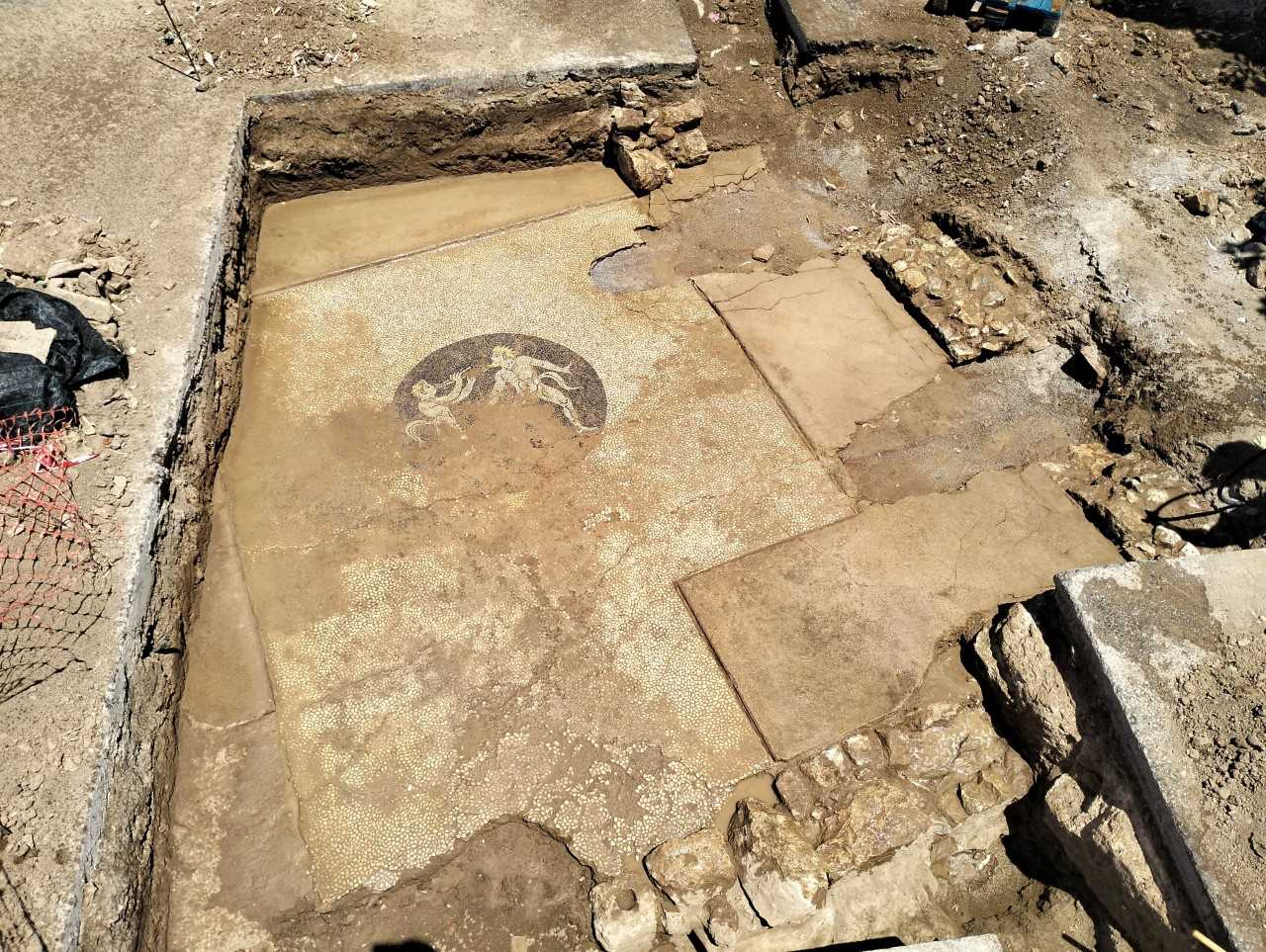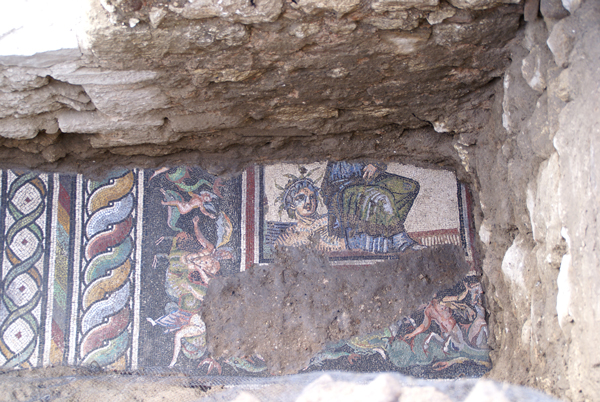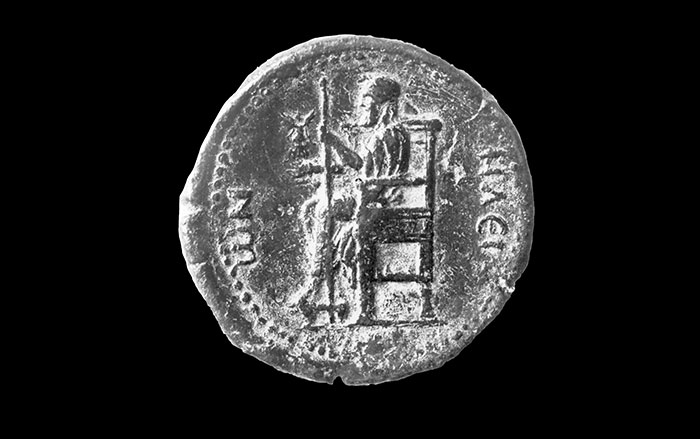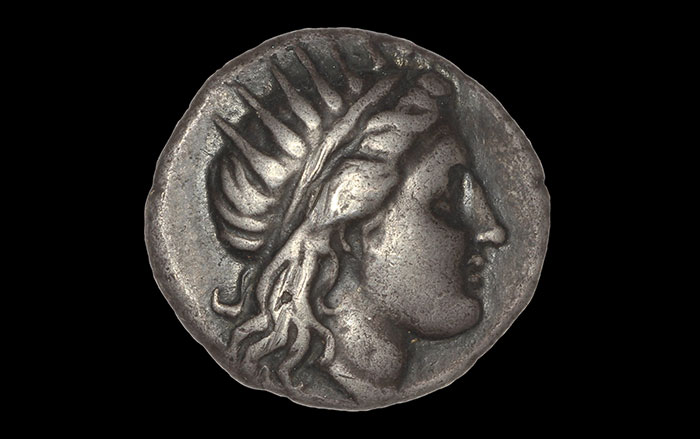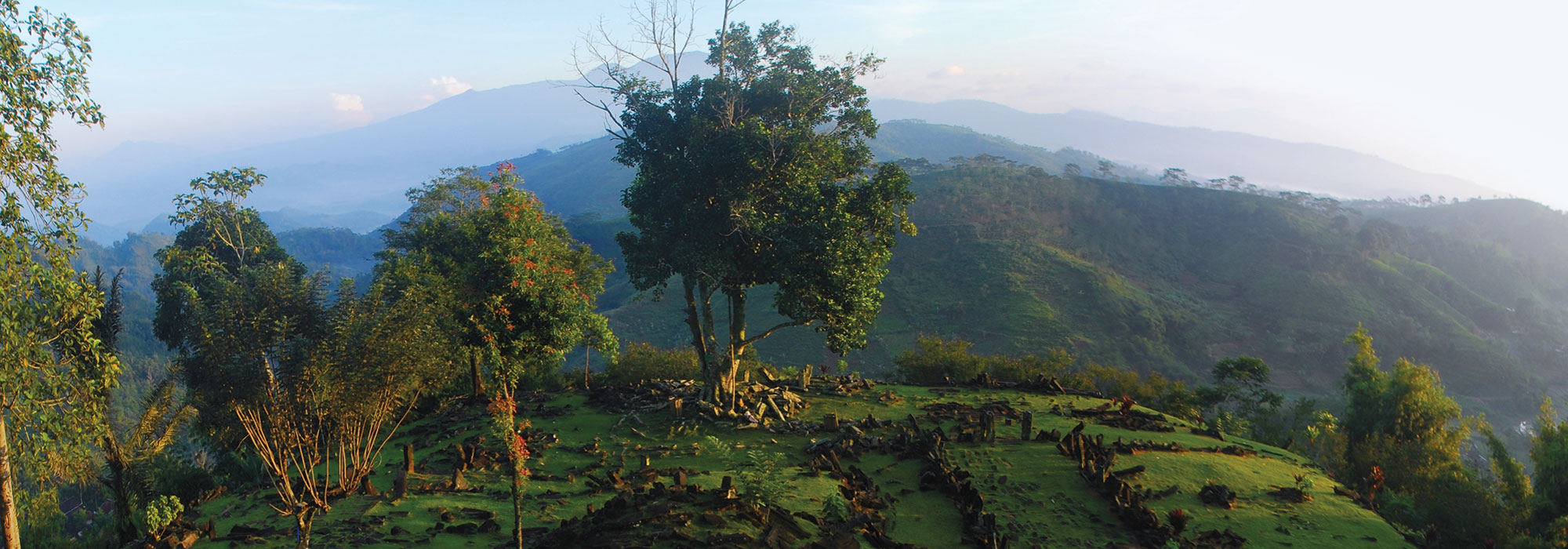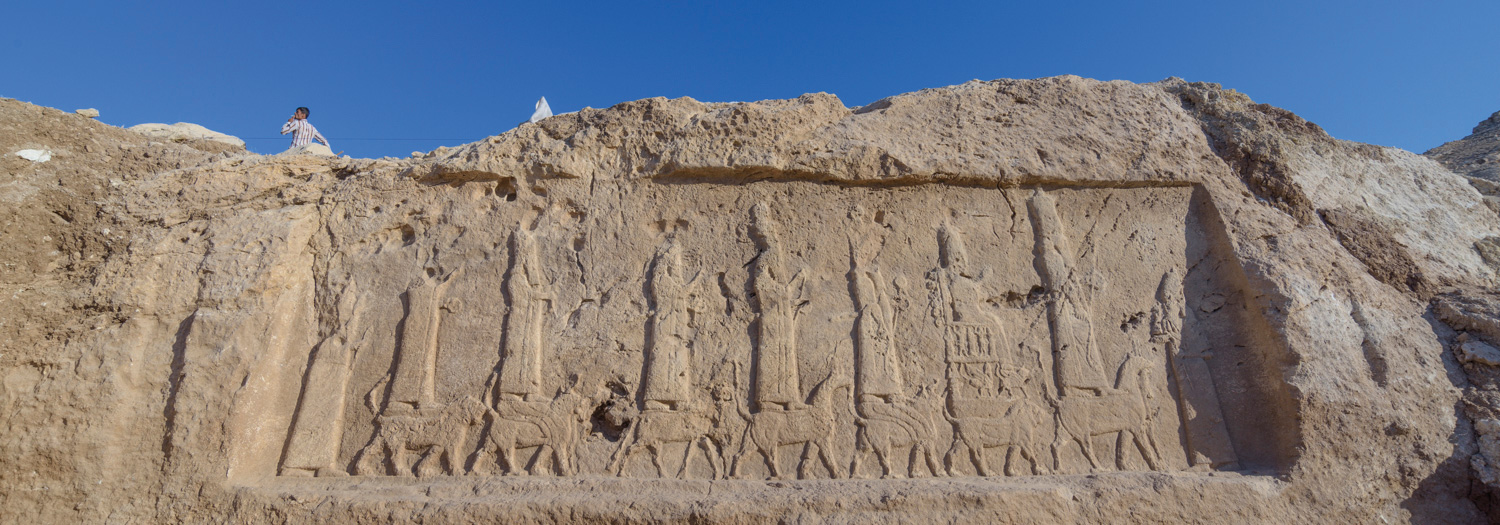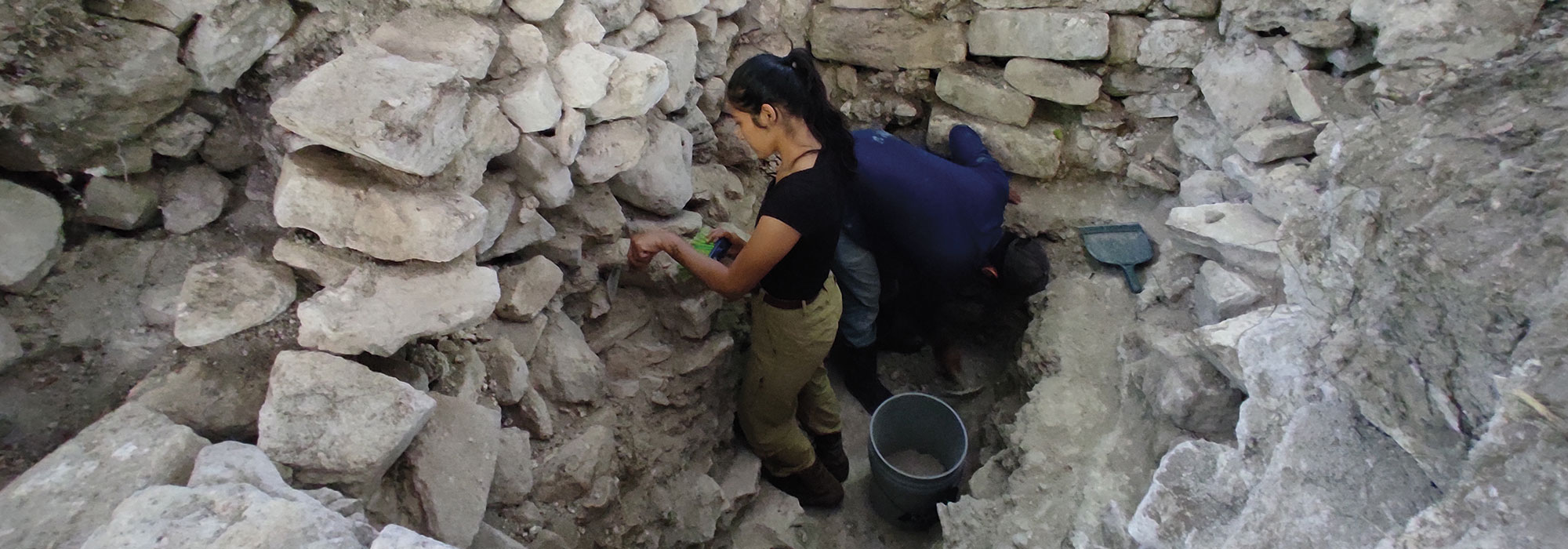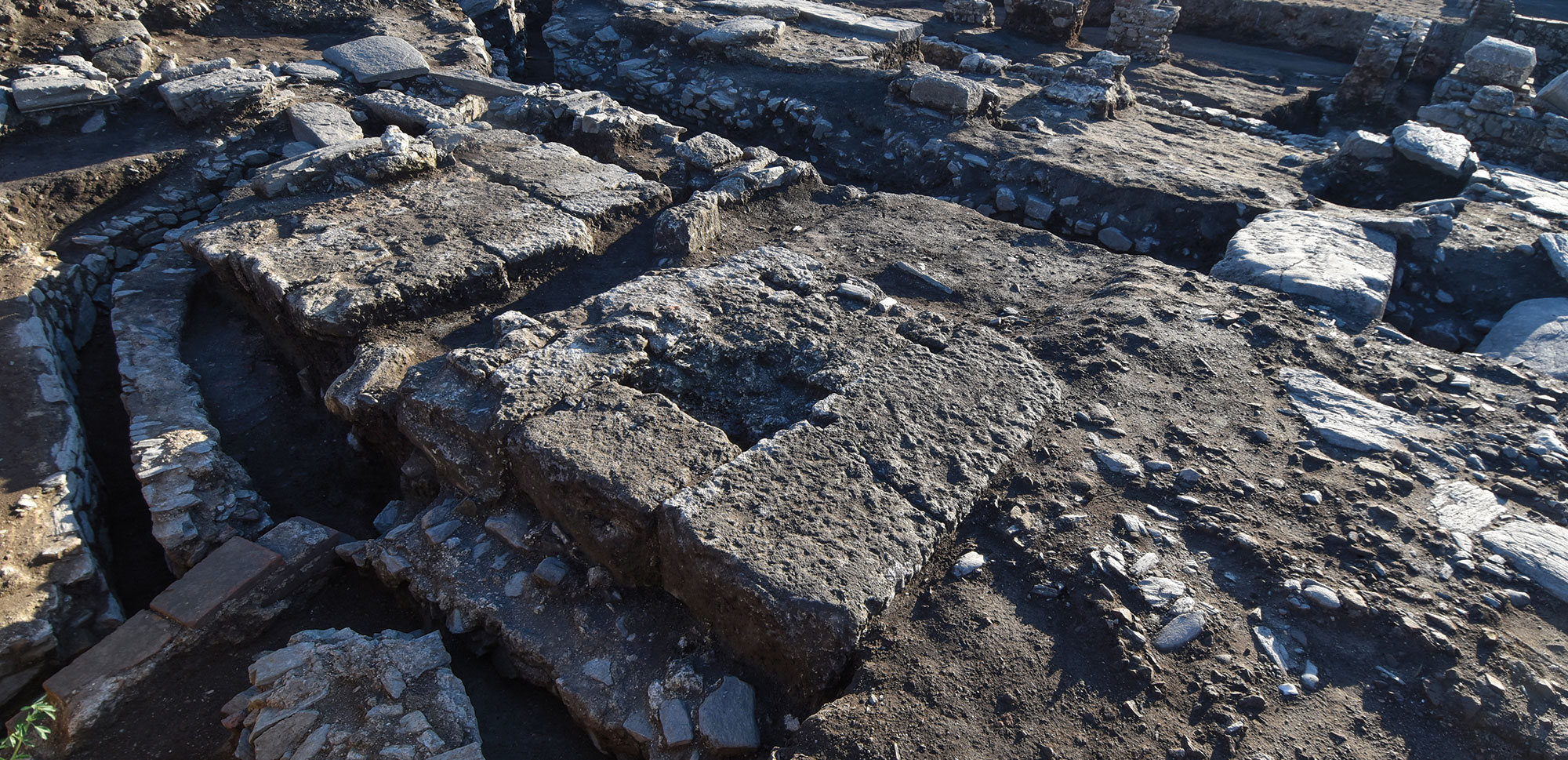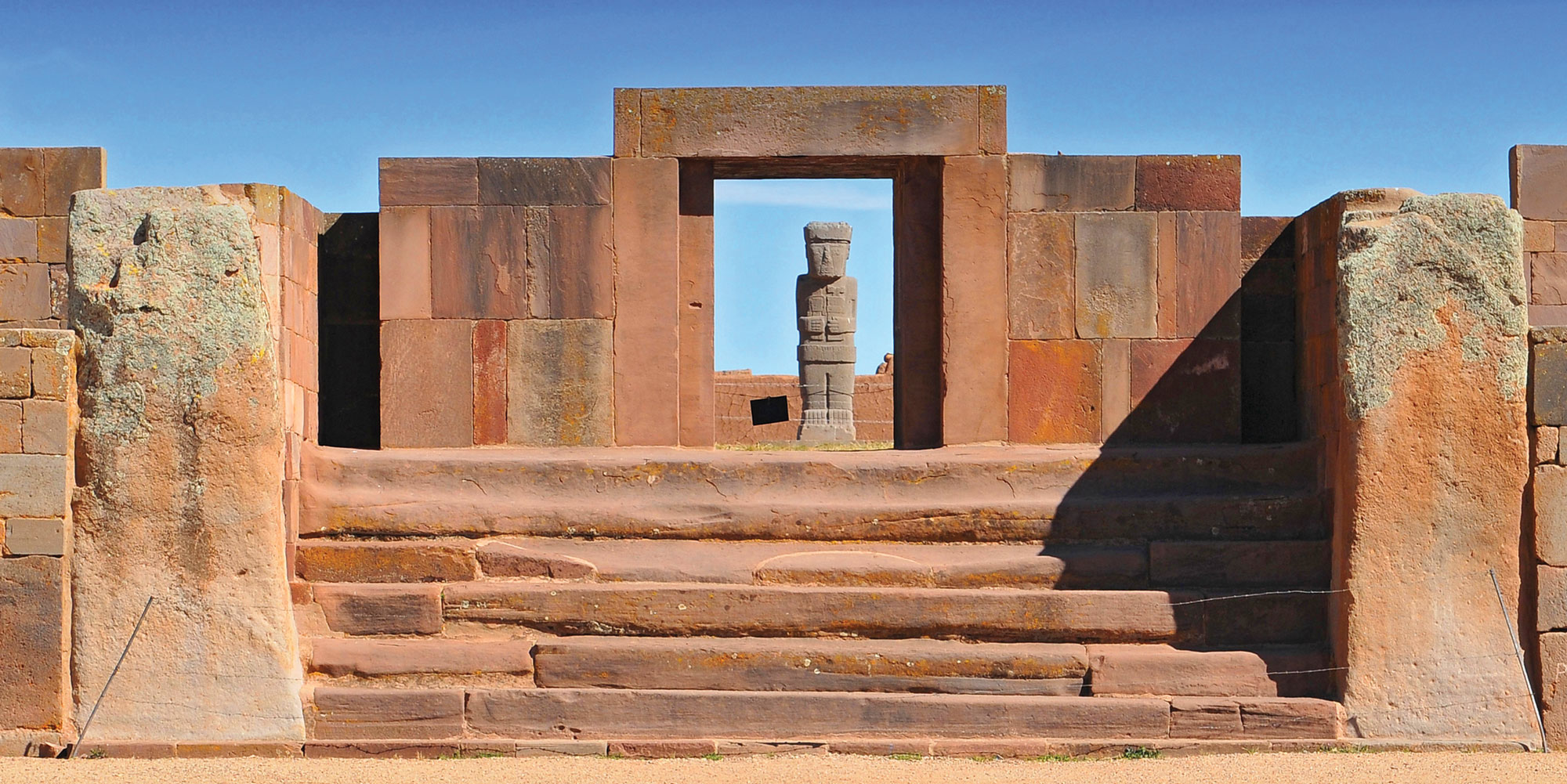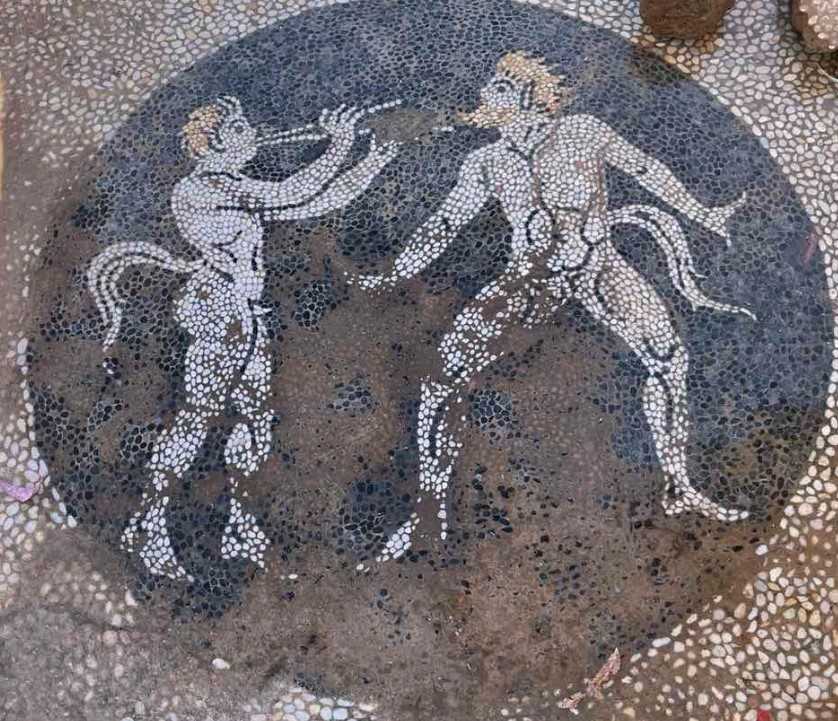
ERETRIA, GREECE—Newsweek reports that a water pipeline project on the Greek island of Evia has uncovered traces of a settlement dated to the fourth century B.C. A mosaic floor made with colored pebbles in white, black, red, and yellow has been found in a dwelling situated in the middle of the settlement. The center image of the mosaic features two satyrs, the male nature spirit companions of Dionysus, the Greek god of winemaking and fertility. One of the yellow-haired satyrs has a beard and appears to be dancing to music played by the other on a double flute. The square room is thought to have been used for gatherings and banquets. To read about excavations at the ancient Macedonian capital of Pella, go to "Alexander the Great's Untold Story."


